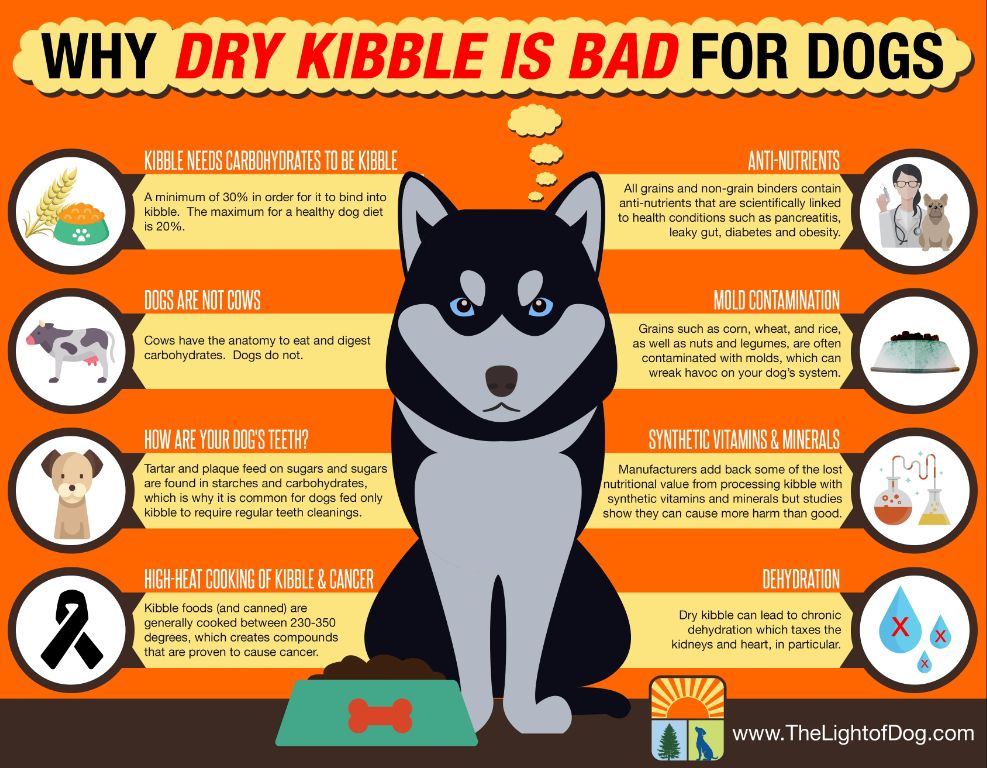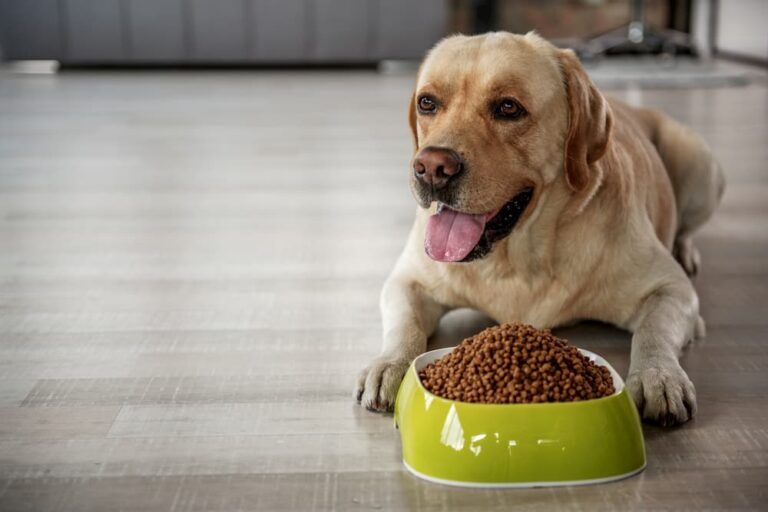Introduction
Dry dog food often comes in bags or containers that owners will store after opening. A common question dog owners have is whether dry dog food can become rancid after the bag is opened. This article will explain what food rancidity is, signs that your dog’s dry food may have gone rancid, potential health risks, types of dog food prone to rancidity, proper storage guidelines, how to read expiration dates, when to throw away old dry dog food, signs your dog may have eaten rancid food, and tips to prevent rancidity. The goal is to help dog owners understand if and when dry dog food can go bad, how to identify rancid food, and how to store dry dog food properly to maximize freshness and avoid potential health issues.
Rancidity is a characteristic of fats and oils that have undergone degradation and decomposition, marked by unpleasant odors and tastes. Chemically, rancidity is caused by the oxidation and hydrolysis of fats and oils.
Oxidation occurs when unsaturated fats are exposed to oxygen, light, heat, or moisture. This exposure causes free radicals to form, which then react with fatty acids and produce peroxides and aldehydes that have strong, unpleasant odors and flavors. This process is called oxidative rancidity.
Hydrolysis happens when the triglycerides in fats and oils react with water, causing them to break down into glycerol and free fatty acids. These free fatty acids also have disagreeable odors and tastes. This form of degradation is known as hydrolytic rancidity.
Both oxidative and hydrolytic rancidity lead to the breakdown of fats and oils, giving them a rank, unpleasant smell and taste that is often described as painty, grassy, or soapy. This rancid odor and flavor is noticeable in foods containing fats and oils that have spoiled due to improper storage or aging.

Signs of Rancid Dog Food
There are several clear signs that indicate when dry dog food has gone rancid:
Smell – Rancid dog food will have a noticeably sour, bitter odor that some describe as almost chemically. It will not have the usual meaty smell of fresh kibble.1
Texture – Dry kibble that has gone rancid will become soft, mushy and crumble easily. Good dry food should be hard and crunchy.3
Appearance – You may see mold growing on rancid kibble. Bugs may also be present. The kibble may look lighter in color.2
Taste – Rancid food will taste bitter and sour instead of like meat and grains. Dogs will usually reject rancid food after the first bite.
Health Risks
Rancid dog food can pose significant health threats to dogs. As dog food turns rancid, often due to exposure to heat, light, or oxygen, the fats and oils oxidize. This oxidation process creates free radicals that can be toxic to dogs. Feeding rancid dog food can lead to vomiting, diarrhea, and upset stomach in the short term.1
In the long term, a diet of rancid dog food may contribute to chronic conditions like liver or kidney disease, pancreatitis, and cancer. Rancid fats and oils are difficult for dogs to digest and metabolize properly, putting strain on the liver and kidneys. The free radicals can also cause oxidative damage that may increase cancer risk. Pregnant dogs and puppies are especially vulnerable to the effects of rancid food.
Owners who feed rancid dog food may notice lethargy, weight loss, diarrhea, vomiting, and poor coat quality as potential signs of the detrimental health effects. It’s important to frequently check dog food for freshness and odor, and discard any that smells unpleasant or chemically off.

Which Types of Dog Food are Prone to Rancidity?
Some types of dog food are more susceptible to going rancid than others. Here’s how they compare:
Kibble
Dry kibble has a high risk of going rancid due to its ingredients and production process. The fats in kibble are exposed to heat, air, and light during extrusion, causing oxidation. This makes the fats prone to rancidity once the bag is opened (Source). An unopened bag of kibble may last 6-12 months, but once opened it should be used within 4-6 weeks before it goes rancid.
Canned Food
Canned wet food has a much lower risk of rancidity thanks to the canning process. The can protects the contents from oxygen and light exposure. An unopened can of wet food can last 2-5 years, while an opened can should be used within 3-5 days (Source).
Freeze-Dried
Freeze-dried dog food is also prone to rancidity once exposed to air. The dehydration process extends shelf life compared to raw food, but opened freeze-dried food should be used within 2-3 weeks (Source).
Dehydrated
Like freeze-dried food, dehydrated kibble is prone to oxidation and spoilage after opening. Use opened dehydrated food within 2-3 weeks before it goes rancid.
Raw Food
Raw dog food has the highest risk of spoilage. Bacteria thrive in raw meat and fish, causing it to go rancid quickly. Raw food should be used within 2-3 days of thawing or opening (Source). Proper food handling is critical.
Storage Guidelines
Proper storage is key to preventing dry dog food from going rancid. Here are some tips:
Store dry food in an airtight, food-grade plastic or stainless steel container. This prevents air and moisture from getting in, which can cause early spoilage (Source).
Keep it in a cool, dry place like a pantry or cupboard. Avoid warm, humid areas like next to the stove or oven. Heat and moisture accelerate rancidity (Source).

Don’t store dog food in the fridge or freezer. The temperature fluctuations from opening the door can introduce moisture (Source).
If resealing a bag, press out excess air before rolling and clipping it. Oxygen oxidizes fats in the food over time.
Store foods by “first in, first out” and check dates regularly. Use up older packages before opening new ones.
Buy food in portion sizes your dog will finish quickly. The less time food sits after opening, the better.
Expiration Dates
The expiration date on dog food is more of a best by or sell by date rather than an exact expiration date. Dry kibble can usually be safely consumed up to a year after the best by date, as long as it has been stored properly and the bag was unopened. The best by date refers to the estimated period of peak quality, when the nutrients in the dog food remain intact before slowly degrading over time. However, the food does not suddenly become rancid or dangerous to eat right after that date.
For canned wet food, cans can often last around 2 years past the best by date if unopened and stored in a cool, dry place. Once opened, canned food is typically good for around 5-7 days if refrigerated before spoiling. So the dates are simply guidelines and not hard cutoffs for when the food becomes unsafe.
It’s important to assess the quality and freshness of dog food by examining its smell, texture, appearance and your dog’s appetite rather than relying solely on the date. Your nose is usually the best tool for detecting rancidity. But as a general rule, unopened dry dog food stored properly can safely be consumed up to a year past its date, while cans can go around 2 years when unopened and refrigerated after opening.
Sources:
https://www.communitycatspodcast.com/the-scoop-on-pet-food-expiration-dates/
https://www.thesprucepets.com/does-dog-food-expire-4797904
When to Toss Old Dog Food
There are a few signs that indicate it’s time to discard your dog’s dry food. If the kibble smells rancid, musty, or unpleasant, it should be thrown out immediately. Visible mold growth or clumping of the kibble are also clear signs it is past its prime. In general, an opened bag of dry dog food should be discarded after 6 weeks, even if no signs of spoilage are present. Unopened bags can last around 18 months past the expiration date before quality begins to diminish.
Pay close attention to storage guidelines and best by dates, but also rely on your senses. If the food smells bad or looks discolored, err on the side of caution and throw it away. It’s better to waste a bit of kibble than risk your dog’s health. When inspecting the bag, look for signs of insect infestation as well. Any presence of bugs or larvae means the food is not safe for consumption. If you have any doubts about the freshness of your dog’s meal, it’s best to just replace it with a new bag of kibble.
Because rancidity develops slowly, it can initially go unnoticed. So it’s a good practice to keep track of how long food has been stored, especially once opened. Rotate your stock and use the oldest food first to avoid spoilage of unused kibble over time. Your dog’s safety should be the top priority when deciding whether to discard old kibble.
Signs Your Pet Had Eaten Rancid Food
If your dog has consumed rancid food, you may notice several concerning symptoms. Some of the most common signs of food poisoning from rancid dog food include:
Vomiting – One of the first and most obvious symptoms will likely be vomiting. You may see your dog vomit multiple times shortly after eating the spoiled food. The vomit may contain pieces of the rancid food or bile.
Diarrhea – Along with vomiting, rancid food often causes diarrhea. Your dog may have loose, watery stools or even bloody diarrhea after ingesting bad food. The diarrhea may persist for 24 hours or longer.
Lethargy – Your once energetic pup may suddenly become extremely tired and lethargic if they’ve eaten rancid food. They may sleep much more than usual or seem weak and unable to play as normal.
Loss of appetite – Since eating the spoiled food makes dogs feel ill, they often lose their appetite afterward. Your dog may refuse their normal meals and treats after getting food poisoning.
Dehydration – The combination of vomiting and diarrhea can quickly lead to dehydration. Check your dog’s gums to see if they appear sticky, dry, or tacky to the touch, which could signal dehydration.
If your dog shows any of these symptoms after eating their dry food, call your vet. They can advise you on next steps for treating the food poisoning and getting your pup back to full health.
Conclusion
In summary, while dry dog food can become rancid over time when improperly stored, there are steps you can take to prolong its freshness. Check expiration dates, store kibble in a cool, dry place in an airtight container, and toss old food that smells off or is discolored. Feed your dog fresh food, and be alert for signs of gastrointestinal upset or other health issues that could indicate rancidity. With proper handling and rotation of your pet’s food supply, you can help ensure your furry friend enjoys safe and nutritious meals.

The key takeaways are:
- Dry dog food can spoil due to oxidization of fats, causing rancid odor and taste
- Look for changes in smell, texture, and color as signs of rancid kibble
- Rancid food poses health risks like vomiting and liver problems
- Proper storage extends shelf life – store in airtight containers in a cool, dry place
- Toss old, expired food even if it still smells and looks okay
- Monitor your dog for signs of gastrointestinal upset after eating
By being aware of rancidity risks, storing kibble correctly, and discarding old food, you can ensure your dog’s meals stay fresh and nutritious.